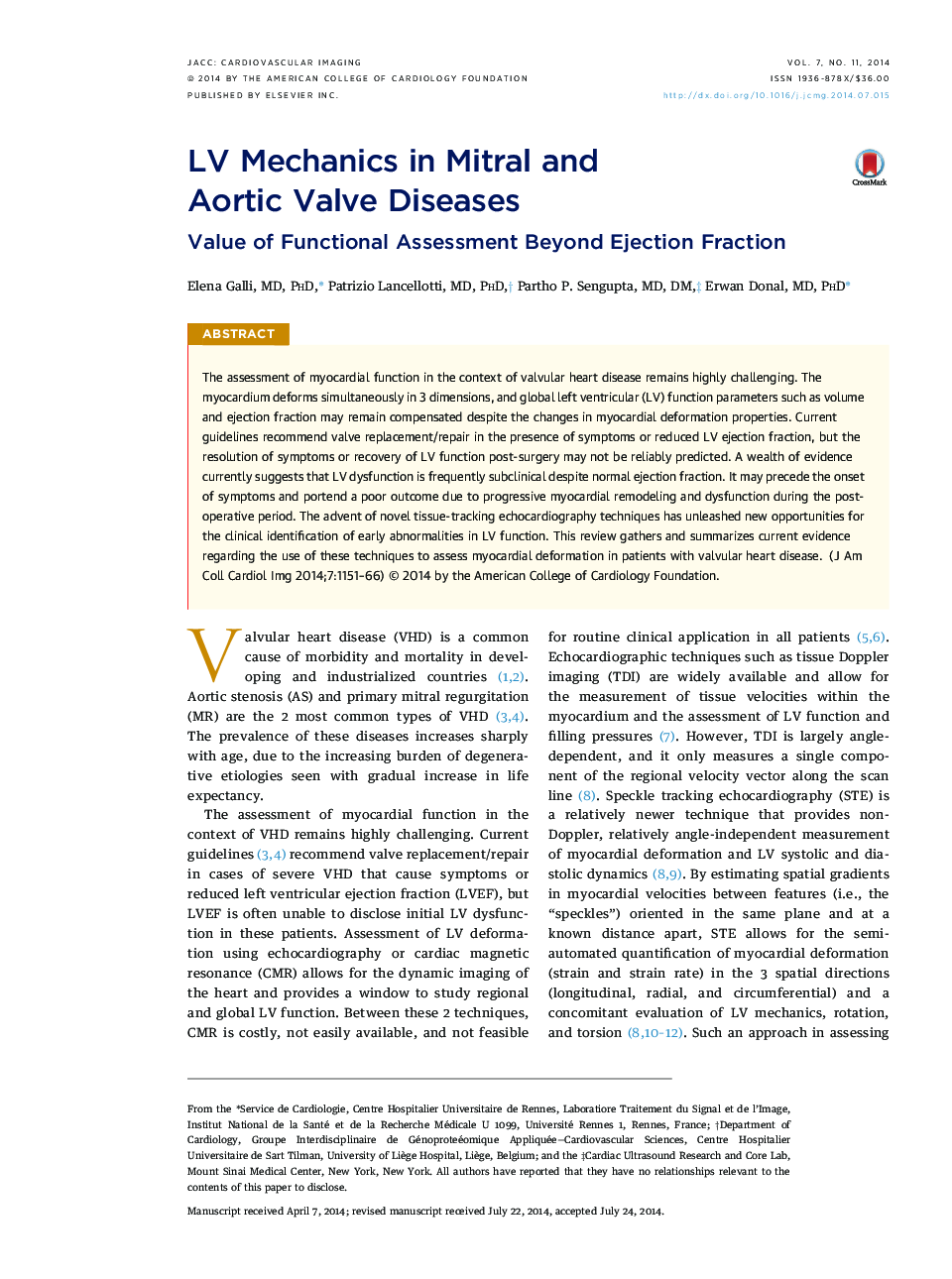| Article ID | Journal | Published Year | Pages | File Type |
|---|---|---|---|---|
| 5980379 | JACC: Cardiovascular Imaging | 2014 | 16 Pages |
The assessment of myocardial function in the context of valvular heart disease remains highly challenging. The myocardium deforms simultaneously in 3 dimensions, and global left ventricular (LV) function parameters such as volume and ejection fraction may remain compensated despite the changes in myocardial deformation properties. Current guidelines recommend valve replacement/repair in the presence of symptoms or reduced LV ejection fraction, but the resolution of symptoms or recovery of LV function post-surgery may not be reliably predicted. A wealth of evidence currently suggests that LV dysfunction is frequently subclinical despite normal ejection fraction. It may precede the onset of symptoms and portend a poor outcome due to progressive myocardial remodeling and dysfunction during the post-operative period. The advent of novel tissue-tracking echocardiography techniques has unleashed new opportunities for the clinical identification of early abnormalities in LV function. This review gathers and summarizes current evidence regarding the use of these techniques to assess myocardial deformation in patients with valvular heart disease.
